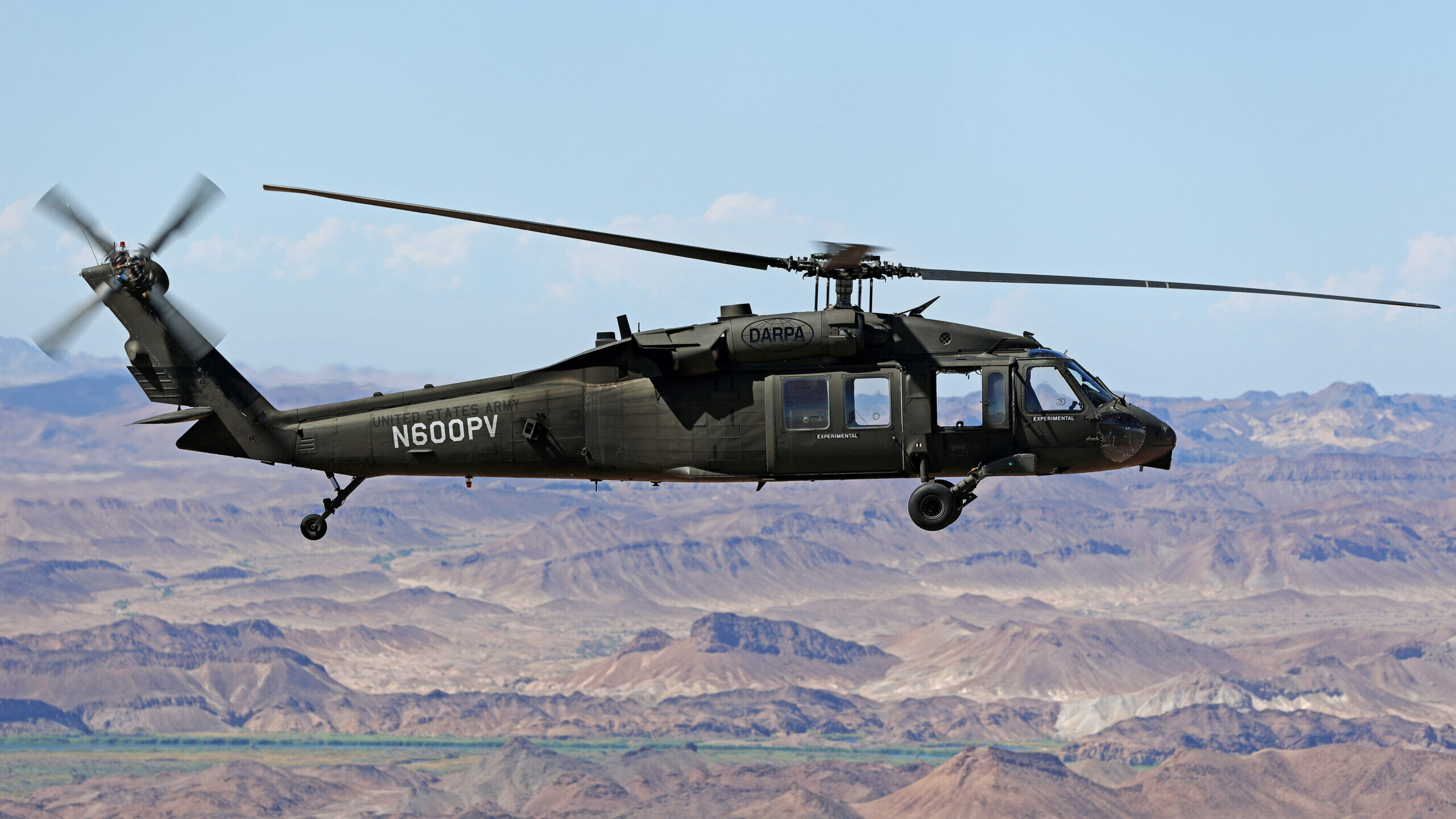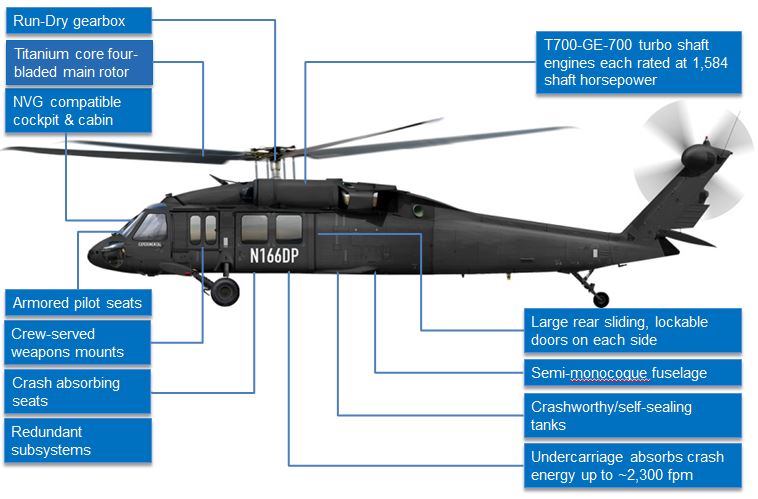The Future of the UH 60: Technologies and Upgrades for Enhanced Performance
The Future of the UH 60: Technologies and Upgrades for Enhanced Performance
Blog Article
UH-60: Developments in Modern Helicopter Design
The UH-60 helicopter stands as a benchmark in contemporary aeronautics, showcasing considerable improvements in style and innovation that provide to the developing needs of armed forces procedures. As we check out the advancement and key developments of the UH-60, it ends up being necessary to take into consideration exactly how these advancements affect not just present applications however also the future landscape of helicopter style.

Evolution of the UH-60
The development of the UH-60 Black Hawk helicopter stands for a significant milestone in aerospace design and military air travel. Presented in the late 1970s, the UH-60 was developed by Sikorsky Aircraft to meet the United States Army's need for a flexible utility helicopter efficient in carrying out a range of objectives. Its layout stressed ability to move, durability, and rate, establishing new standards for functional performance.
The UH-60 includes a distinct four-blade rotor system, which enhances lift and security, allowing it to run successfully in diverse atmospheres. Its airframe is constructed from innovative composite materials, adding to a decrease in weight while preserving architectural honesty. The helicopter's style additionally incorporates better aerodynamics, which enhances gas efficiency and raises range.
Throughout the years, the Black Hawk has gone through several upgrades to enhance its abilities, consisting of boosted engines, advanced flight control systems, and modular systems for easy upkeep and adaptability. The helicopter's capacity to carry out goals ranging from army transport to clinical evacuation has strengthened its role as a backbone of united state army procedures. The UH-60 Black Hawk continues to be an archetype of how technology in helicopter design can significantly affect military efficiency and functional versatility.
Advanced Avionics Equipments
Improvements in avionics systems have actually transformed the capacities of contemporary helicopters like the UH-60 Black Hawk, enhancing functional efficiency and situational recognition (UH 60). The combination of innovative avionics permits enhanced trip, navigating, and communication management, making the UH-60 a lot more flexible in varied objective accounts
One of the key functions is the advanced digital cabin, which uses multifunction displays that supply real-time information, making sure pilots have prompt access to crucial trip information. This streamlining of details lessens pilot work and improves decision-making procedures throughout complicated operations. Furthermore, the unification of general practitioner and inertial navigation systems makes it possible for precise positioning and path preparation, enhancing goal execution in challenging environments.
In addition, advanced avionics systems boost communication capabilities through protected data web links and voice communication systems, allowing seamless sychronisation with ground pressures and various other airplane. The assimilation of automatic flight control systems further adds to enhanced stability and control, particularly in damaging climate condition or during low-altitude maneuvers.
Engine and Efficiency Enhancements
Engine performance in modern-day helicopters has taken a substantial leap forward, driven by innovations that increase power, dependability, and effectiveness. At the forefront of these improvements is the fostering of even more effective turboshaft engines, specifically those using advanced materials why not try these out and modern technologies that enable higher temperature level tolerances and raised drive capabilities. The UH-60 Black Hawk, for instance, utilizes the T700-GE-701C engine, which includes a dual-channel, full-authority digital engine control system. This system improves performance while optimizing gas consumption and minimizing upkeep requirements.
Moreover, the assimilation of engine health and wellness tracking systems permits for real-time diagnostics and anticipating maintenance, substantially enhancing operational integrity. These systems not only sharp crews to potential concerns before they become essential however also help with more effective maintenance scheduling, consequently lowering downtime.

Materials and Structural Innovations
Current growths in products and structural design have actually reinvented contemporary helicopter building, boosting both efficiency and resilience. The introduction of sophisticated composite products, such as carbon fiber strengthened polymers, has actually dramatically lowered weight while keeping architectural honesty. This shift not only enhances fuel efficiency yet additionally increases haul capability, enabling helicopters like the UH-60 to perform more diverse missions.
Additionally, developments in aluminum alloys and titanium elements have contributed to boosted resistance to rust and tiredness, expanding the life-span of crucial airframe components. The calculated use these materials has actually resulted in a decrease in maintenance needs and improved total functional readiness.

Additionally, the combination of computer-aided style (CAD) and additive production innovations has allowed a lot more intricate geometries and light-weight structures, maximizing the wind resistant efficiency of helicopter styles. These innovations promote rapid prototyping and manufacturing, allowing makers to respond quickly to progressing goal requirements.
Safety And Security and Survivability Functions
Safety and security and survivability functions in modern helicopter style have become extremely important, mirroring the boosting needs for mission effectiveness in challenging atmospheres. The UH-60 Black Hawk, a noteworthy example, integrates innovative technologies to improve crew and guest defense.
The helicopter also utilizes a ballistic protection system, which includes armored team seats and essential systems protecting, lowering vulnerability to small arms fire and shrapnel. Enhanced situational understanding is accomplished through advanced avionics and sensing unit technologies, permitting pilots to find and prevent threats successfully.
Additionally, the integration of redundancy in vital systems-- such as double engines and several flight control channels-- ensures ongoing procedure also if one system stops working. The UH-60 is outfitted with advanced emergency flotation gadgets, improving survivability in water touchdowns. Jointly, these functions not just enhance the security of employees however also enhance visit this page objective success prices in hostile environments, showing the dedication to excellence in helicopter style.
Final Thought
The UH-60 helicopter stands for a significant advancement in modern aviation innovation, integrating ingenious products, innovative avionics, and durable security features. Generally, the UH-60 serves as a standard for future advancements in helicopter design, symbolizing strength and versatility in modern armed forces procedures.
The UH-60 helicopter stands as a benchmark in modern air travel, showcasing significant innovations in layout and technology that provide to the evolving demands of army procedures. As we explore the advancement and crucial developments of the UH-60, it comes to be essential to consider how these growths influence not only present applications however also the future landscape of helicopter style.
Introduced in the late 1970s, the UH-60 was made by Sikorsky Airplane to satisfy the United States Army's demand for a flexible energy helicopter qualified of doing a selection of objectives. The UH-60 Black Hawk stays a prime instance of just how advancement in helicopter design can considerably affect armed forces efficiency and functional adaptability.
In general, the UH-60 offers as a standard for future developments in helicopter design, symbolizing strength and flexibility in contemporary armed forces operations.
Report this page